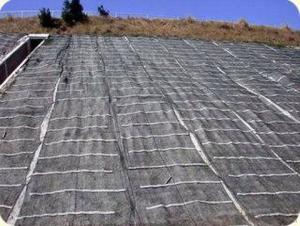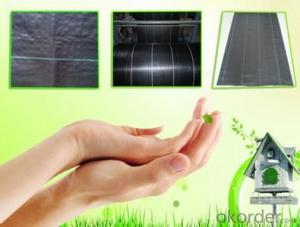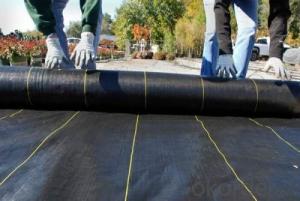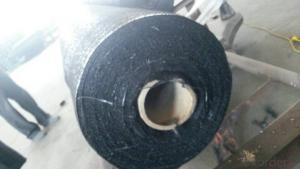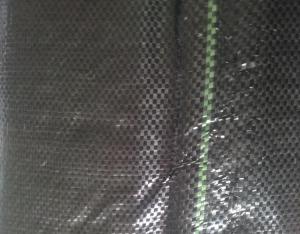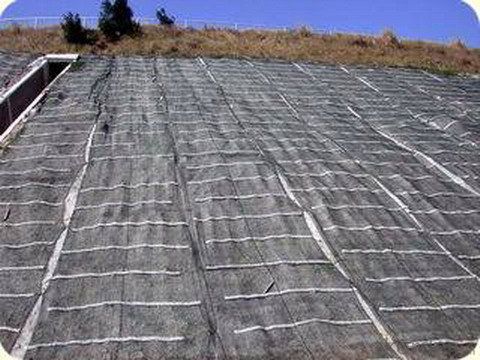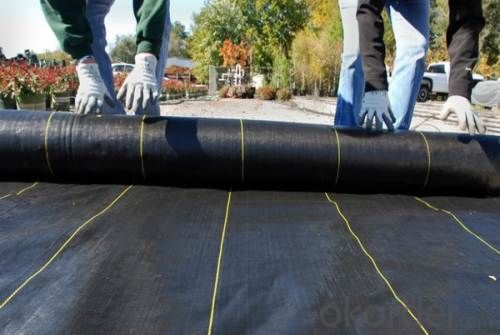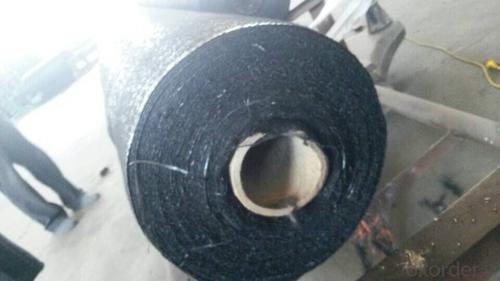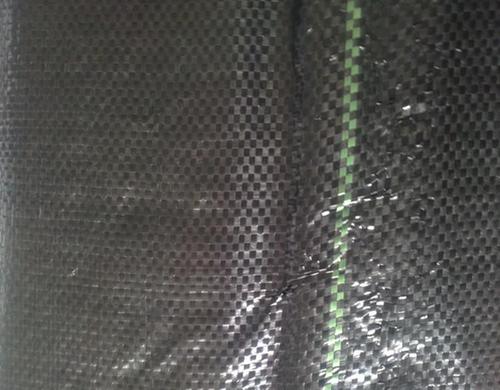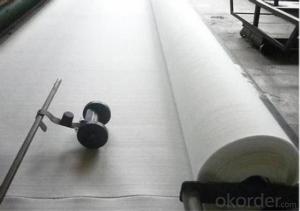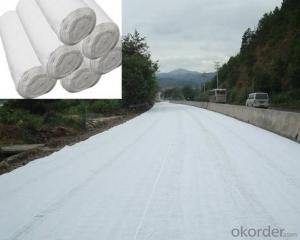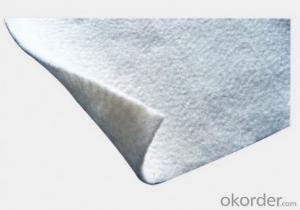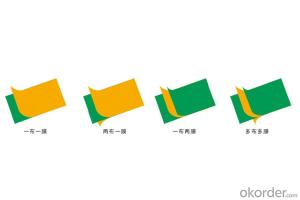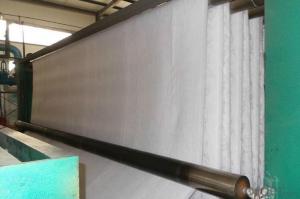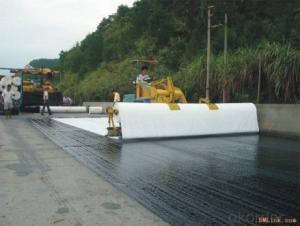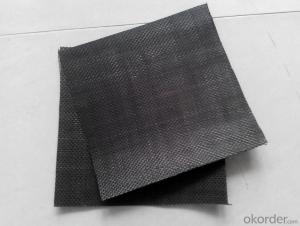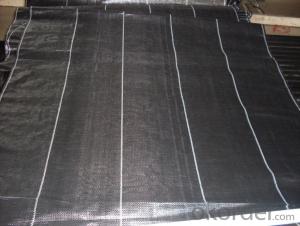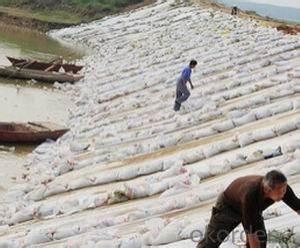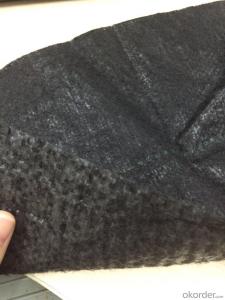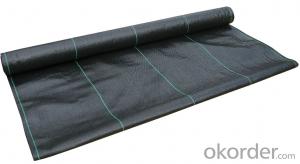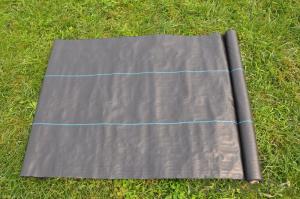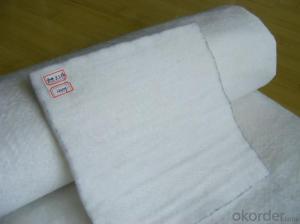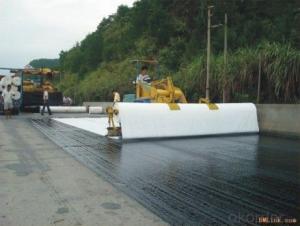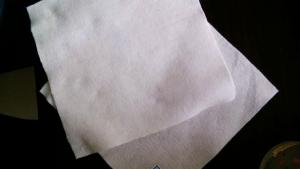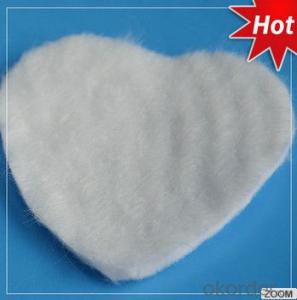Geotextil Para Macetas - Landscape Fabric, Weed Barrier in Low Price of High Quality
- Loading Port:
- Qingdao
- Payment Terms:
- TT OR LC
- Min Order Qty:
- 10000 m²
- Supply Capability:
- 500000 m²/month
OKorder Service Pledge
OKorder Financial Service
You Might Also Like
Product Description
The weed control mat is made of environmentally friendly raw materials, pp woven fabric. It used to prevent the growth of weed, without the use of potentially dangerous chemical sprays or labor intensive hoeing. Once installed, weed mat will continue providing protection for years without maintenance.
They are permeable fabrics, which allow air, water and nutrients to pass through, and designed to block out the sun to reduce photosynthesis and stop weed growth.
Specification
ROPERTY | ASTM TEST METHOD | Minimum Average | Minimum Average |
Mass per unit Area | ASTM D-5261 | 3.0 oz/yd2 | 100 g/m2 |
Grab Tensile | ASTM D-4632 | 145 lbs | 660 N |
Grab Elongation | ASTM D-4632 | 15% | 15% |
Trapezoid Tear | ASTM D-4533 | 55 lbs | 245 N |
Water Flow Rate | ASTM D-4491 | 5 gal/min/ft2 | 203 L/min/m2 |
UV Resistance | ASTM D-4355 | 70% @ 500 hrs | 70% @ 500 hrs |
ROLL DIMENSIONS | |||
Roll Width | 0.9m (3’) | 1.8m (6') | 2.7m (9') |
Roll Length | 91.4m (300’) | ||
Roll Weight | 8kgs (17lbs) | 16kgs (34lbs) | 24kgs (52bs) |
Features
1. Weed suppressant and drainage control landscaping fabric
2. Easy to use, Environmentally friendly
3. Allows water, air and nutrients through, suppressing weeds without the use of chemicals
4. Reduces the level of watering required due to the slower rate of water evaporation
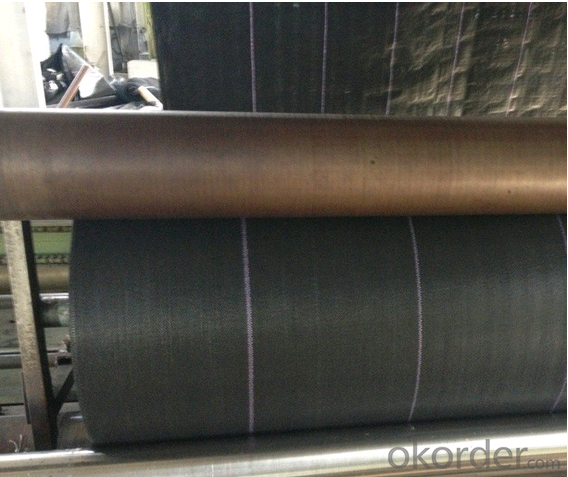
Application
1. Excellent Weed Control
2. Moisture, fertilizers, air reach plants to allow for healthy soil
3. Good water and air permeability
4. Exceptional toughness and strength
5. Durable, tear-resistant; won't rot or mildew
6. Lightweight, easy to install, follows natural ground contours
7. Ideal for use in landscaped beds, under decks and walkways.
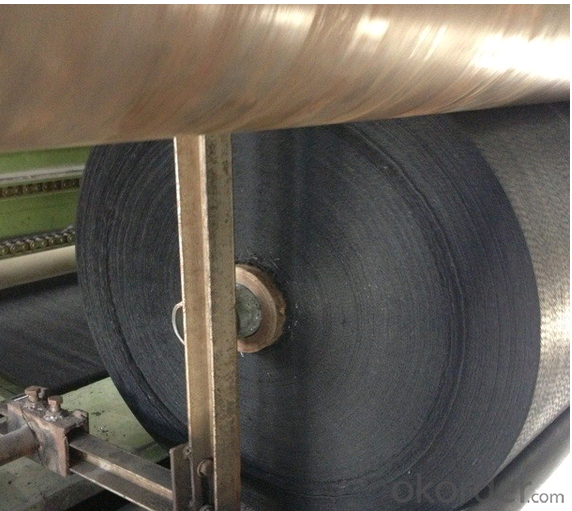
Packaging & Delivery
| Packaging Details: | Packed In Roll Or In Bales Or Cartons Or According To Customers Requirement |
| Delivery Detail: | 20 Days After Order Confirmed |
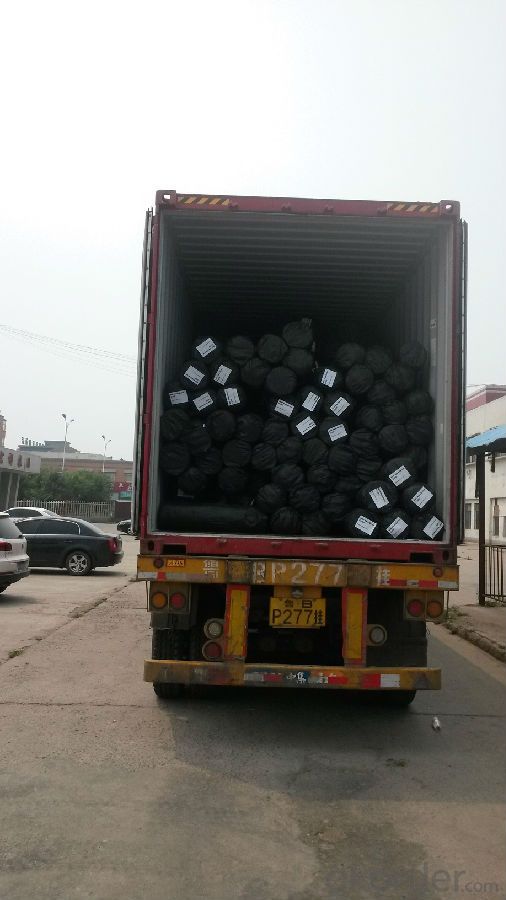
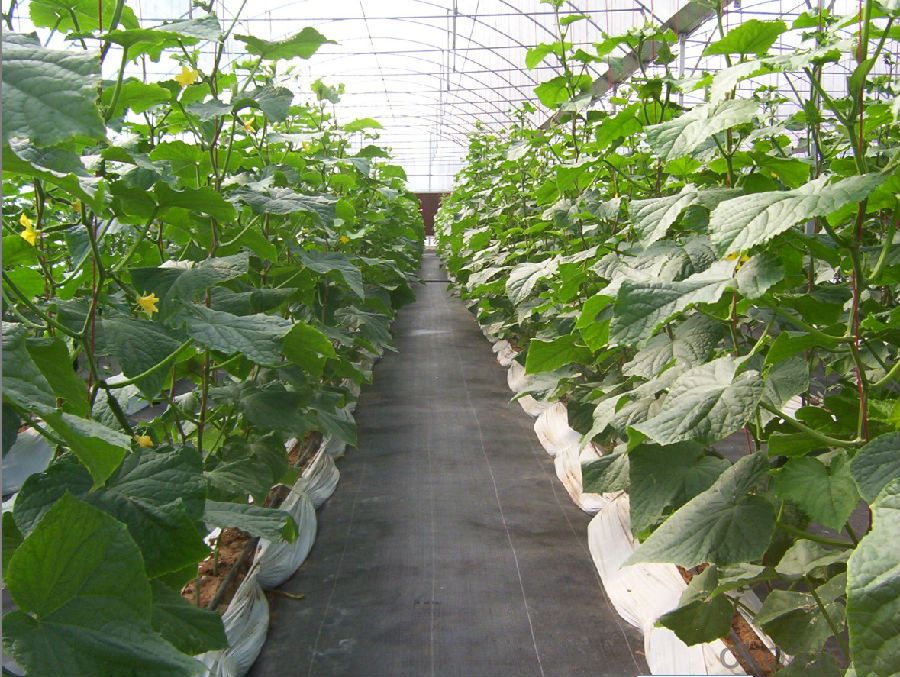
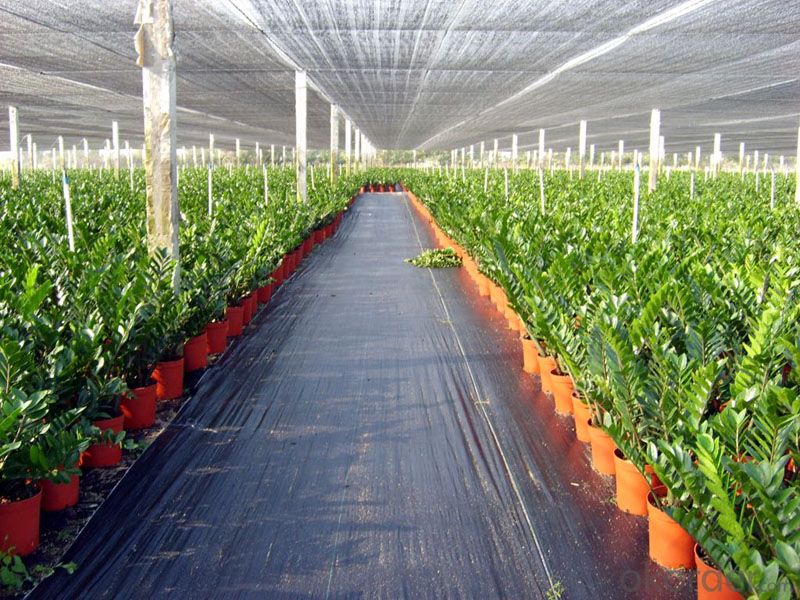
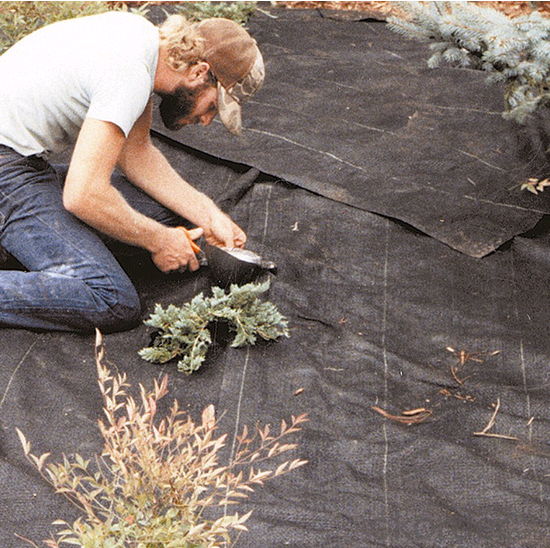
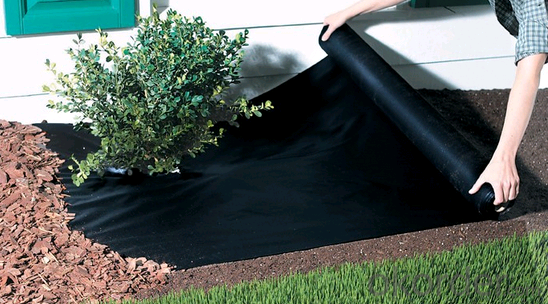
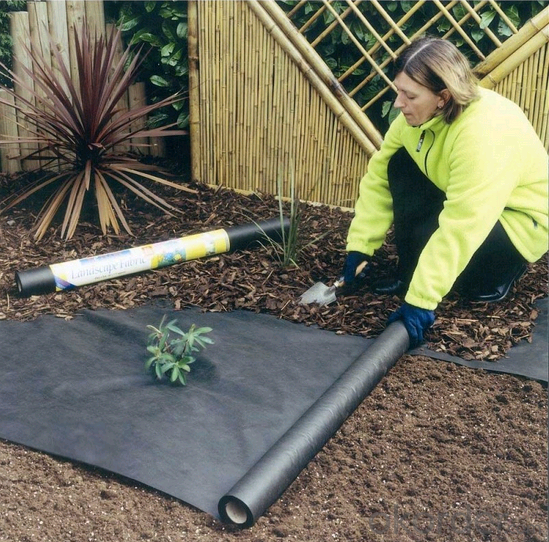
FAQ
1, Samples Policy
Samples are free, but the freight is on customers' charge
Samples will usually be sent out in one day.
2, Prices
As for the prices, we need you to provide us weight, color, width and usage so that
we can quote you best.
3, How to place an order?
Inquiry
Reply
Sample
Contract
Receiving deposit& production
Testing& Packing
Delivery
Receiving
- Q: A creek next to our property is eating away the embankment and an engineer suggested using the sand in the creek bed.. wrapping it up in geotextile fabric in the form of a burrito but he did mnot mention how to fasten them shut..any ideas or experience with erosion control out there?
- Get some tie wire or baling wire. It's a soft wire used for tying reinforcing steel together or for baling straw. You could also use plastic cable ties.
- Q: Characteristics of filament geotextile
- It can replace the traditional engineering materials and construction methods, construction safer, and contribute to environmental protection, can be more economical, effective and lasting solution to the basic problems in the construction. Filament geotextile has good mechanical function, good water permeability, and can be anti-corrosion, anti-aging, with isolation, filtration, drainage, protection, stability, reinforcement and other functions, to adapt to uneven grass-roots, Damage, creep small, long-term load can still maintain the original function. Filament geotextile characteristics: strength - the same weight under the specifications, the tensile strength are higher than other acupuncture non-woven fabrics; anti-ultraviolet light - with high UV resistance; high temperature resistance - resistance High temperature up to 230 ℃, high temperature remains structural integrity and the original physical properties; permeability and flat drainage - geotextile thick and is needle-shaped, with good surface drainage and vertical permeability, years later Can maintain this performance; creep resistance - geotextile creep resistance is better than other geotextiles, so long effect is good. It can resist the erosion of common chemical substances in soil and resistance to gasoline, diesel and other corrosion; ductility - geotextile under a certain stress has a good elongation, so that it can adapt to uneven irregular base; Cloth technical features: thick geotextile, geotextile can guarantee the three-dimensional porosity, is conducive to the realization of excellent hydraulic performance. Geotextile break strength has a great advantage, especially for retaining walls and embankment reinforcement. Geotextile indicators are more than the national standard, is an excellent geotextile reinforced materials.
- Q: What are the key factors affecting the hydraulic conductivity of geotextiles?
- The key factors affecting the hydraulic conductivity of geotextiles include the porosity of the fabric, the size and shape of the openings or pores in the fabric, the fabric thickness, and the surface roughness of the fabric. Additionally, the type and quality of the fibers used in the geotextile can also impact its hydraulic conductivity.
- Q: How do geotextiles help in groundwater drainage?
- Geotextiles help in groundwater drainage by allowing water to pass through while preventing soil particles from clogging the drainage system. They act as a filter, providing a barrier against soil erosion and maintaining the permeability of the drainage system, thus improving the overall efficiency of groundwater drainage.
- Q: Can geotextiles be used in landfill lining systems?
- Yes, geotextiles can be used in landfill lining systems. Geotextiles are commonly employed as part of the composite liner system to prevent leachate seepage and provide reinforcement. They can act as a barrier between the waste and the soil, reducing the potential for contamination and enhancing the overall performance of the landfill lining system.
- Q: How do geotextiles help with reinforcement of geogrid wall systems?
- Geotextiles help with the reinforcement of geogrid wall systems by acting as a separation and filtration layer. They prevent the mixing of different soil layers, which can compromise the stability of the wall system. Additionally, geotextiles help to distribute the loads evenly across the geogrids, enhancing their strength and overall performance.
- Q: How do geotextiles help with sediment retention in sediment basins?
- Geotextiles help with sediment retention in sediment basins by acting as a physical barrier that traps sediment particles while allowing water to pass through. They prevent erosion and sediment movement by stabilizing the soil, reducing the flow velocity of water, and promoting sediment settlement within the basin.
- Q: How do geotextiles help in filtration of stormwater?
- Geotextiles help in the filtration of stormwater by acting as a barrier that allows water to pass through while trapping sediment, debris, and pollutants. They prevent these contaminants from entering the drainage system, improving water quality and reducing the risk of clogging in stormwater infrastructure. Additionally, geotextiles promote infiltration, allowing stormwater to percolate into the underlying soil, thus replenishing groundwater levels and reducing the chances of flooding.
- Q: Are geotextiles suitable for use in mining tailings containment?
- Yes, geotextiles are suitable for use in mining tailings containment. Geotextiles offer excellent filtration properties, high tensile strength, and durability, making them effective in preventing soil erosion and controlling water flow within tailings containment areas. They can also aid in the separation of different layers of tailings, improving the stability and overall performance of the containment system.
- Q: How do geotextiles compare to traditional construction materials?
- Geotextiles are an innovative alternative to traditional construction materials. Unlike traditional materials such as concrete or asphalt, geotextiles offer numerous advantages. They are lightweight, easy to install, and highly flexible, allowing for efficient and cost-effective construction. Geotextiles also provide excellent erosion control, soil stabilization, and drainage capabilities. Furthermore, they are environmentally friendly, as they allow for natural filtration and groundwater recharge. Overall, geotextiles surpass traditional construction materials in terms of versatility, durability, and sustainability.
Send your message to us
Geotextil Para Macetas - Landscape Fabric, Weed Barrier in Low Price of High Quality
- Loading Port:
- Qingdao
- Payment Terms:
- TT OR LC
- Min Order Qty:
- 10000 m²
- Supply Capability:
- 500000 m²/month
OKorder Service Pledge
OKorder Financial Service
Similar products
Hot products
Hot Searches
Related keywords
